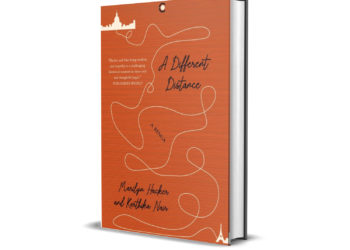This book by Lakshmi Subramanian takes a closer look at Gandhi’s ideas about music, his understanding of it as public expression and its use in nationalist politics. It gives an insight into the way a range of religious, congregational hymns and prayers became an aural canon of political communication which was an integral part of social mobilisation and nationalist politics.
The following is an extract from the book.

Crafting a Community: Prayer as Politics
From the very beginning of his experiments with community-building in South Africa, Gandhi identified music as an important toolfor communication. Both in the Tolstoy farm and Phoenix settlement in South Africa, the emphasis was on schooling children in basic skills and inorienting their minds to an authentic appreciation of moral intention. As a school teacher in the Tolstoy farm, Gandhi began his experiments in1911, intent on working out a comprehensive plan that would enable children to enjoy physical, literary and spiritual training. The curriculum (1912) detailed the kind of manual labour that the students had to perform to develop self-reliance. But more important than that was the need toinculcate a spirit of tolerance and faith, to be saved ‘from the infection of intolerance,’ and until they ‘learned how to view one another’s religion and custom with a large-hearted charity.’1
To ensure this, Gandhi made use of interfaith scriptures accompanied by singing to elevate a sense of oneness and appreciation. Everymorning and evening, singing of hymns marked the prayer services – a feature that was continued in India in both the Sabarmati and Wardha ashrams. Music as a part of educational training in schools and in the life of inmates and residents in the ashrams was thus arecurrent motif in Gandhi’s writings in the period from 1918 to 1935.
The importance of realizing this simple truth of grace and faith expressed through music found concrete expression first of all in SouthAfrica, in the Phoenix settlement and the Tolstoy farm, as a means of training the spirit of children and orienting them to a life of truth.2 In hisreflections on the training of the spirit, he wrote how children were made to memorize, recite and sing hymns. Hymns from a variety oftraditions and practices were selected – his favourite Christian hymns, ‘Abide with me’ and ‘Lead, kindly light’ and hymns from devotionalIndian poetry (Gujarati and Hindi) were pressed into a repertoire that made prayer efficacious and elevating. This enabled Gandhi to projectthe image of music sung in unison as a symbol of human unity, something that ‘echoes inner unison, and this in turn is both a unison ofpowers within the soul (absence of conflict) and a unison between men (oneness of heart).’3
1. CWMG, vol. 14, entry no. 245, ‘Speech at Palaj’, 22 April 1918, p. 363.
2. CWMG, vol. 16, entry no. 138, ‘Speech at Baroda’, 9 october 1919, p. 224.




